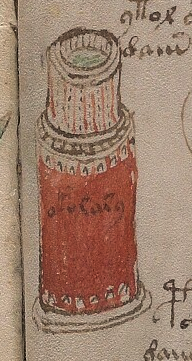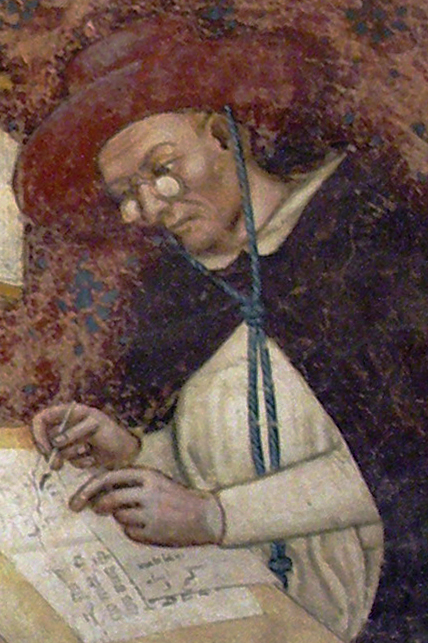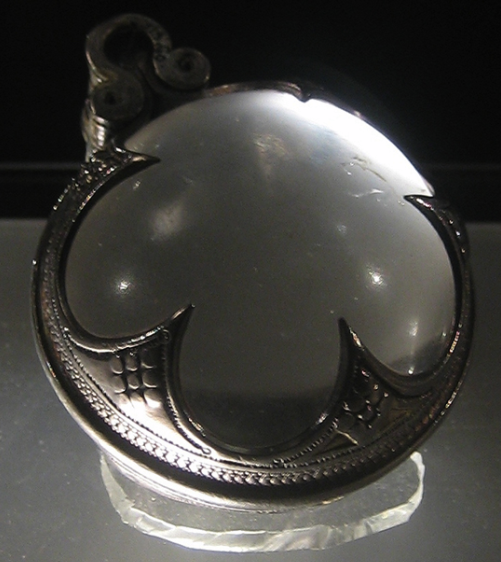http://boscrowan.co.uk/2016/04/03/mousehole-is-a-must/dsc_0198/ In 1267, Roger Bacon sent his Opus Maius and a number of related treatises to Pope Clement IV. The works comprised a brave and impassioned plea for scientific inquiry into all aspects of life (including the occult arts and arts practiced by folk outside of scholarly circles). Friar Bacon hoped that the support of the pope could raise the Catholic faith above its traditional limitations, but Clement IV died in 1268 and may not have read Bacon’s writings. In 1277, Bacon was condemned and subsequently imprisoned for his outspoken and unconventional views, and lived only a short time after being released in 1292.
Akkarampalle  Bacon loved science and one of the subjects dear to his heart was optics. This may be of interest to researchers studying containers in the Voynich Manuscript because some have said that c. 1404 to c. 1438 is too early for any of the containers to be reading tubes or telescopes, but this statement by John Henry Bridges in 1900 suggests the technology may have been available long before the VMS:
Bacon loved science and one of the subjects dear to his heart was optics. This may be of interest to researchers studying containers in the Voynich Manuscript because some have said that c. 1404 to c. 1438 is too early for any of the containers to be reading tubes or telescopes, but this statement by John Henry Bridges in 1900 suggests the technology may have been available long before the VMS:
Of the magnifying powers of convex lenses Bacon had a clear comprehension. He imagined, and was within measurable distance of effecting, the combination of lenses which was to bring far things near, but which was not to be realized till the time of Galileo…. in his Optics Bacon shows that he was acquainted with the properties of parabolic concave mirrors, and of their power of causing parallel rays to converge after reflection to a focus. in this respect he was in advance of his principal teachers in Optic, Euclid, Ptolemy, and Alhazen.
Bacon was familiar with parabolic concave mirrors, had a specific interest in lenses (and may have had some in his possession), and was far ahead of his time in believing that radiant energy could pass through space and air independently of the eye (in contrast to those who asserted that sight was based on the eye producing light rays).
Commentators say that Bacon derived much of his knowledge from Alhazen’s Thesaurus Opticae, but understood it from a fresh perspective in which he questioned traditional assumptions and pursued the ideas as practical embodiments.
Bacon may have been very close to inventing telescopes and microscopes before his tragic incarceration in the late 1270s, and others must have been inspired by him or had similar ideas, because wearable eyeglasses appear to have been in use by 1270, as attested in German Minnesänger ballads, mentioned by C. Barck in 1907 and located by Villiers and Pike in the German Handbook of Inventions by Busch (1795):
Brille besteht aus zwei geschliffenen durch eine Einfassung mit einander verbundenen Gläsern, durch welche die Gegenstände den Augen deutlicher erscheinen. [Eyeglasses are made from two ground/polished glasses, which are connected to one another through a mount/rim, through which the eyes will more clearly see objects.]
The Busch passage illustrated in German script by Villiers and Pike states that Roger Bacon believed that eyeglasses were known in Germany by 1270, quotes the above passages, and writes that they say expressly that old people used them [eyeglasses] to read.
The invention of eyeglasses has sometimes been credited to Salvino d’Armati, in 1284, but in the absence of a supposed epitaph on his tombstone, no evidence supports this claim, and the Minnesänger reference predates it by 14 years.
Friar Alessandro della Spina is said to have created eyeglasses late in the 13th century based on ideas obtained from an unnamed craftsman, possibly by a Pisa artisan. In the archives of 1313, the apparent year of Alessandro’s death, is written:
Brother Alessandro della Spina, a modest and good man, learned to make all industrial products of which he saw or heard. Spectacles, which were made first by some one else, who did not want to communicate anything about them, were then made by him, and were distributed with a cheerful and benevolent heart. [C. Barck, 1907]
Bacon mentions reading lenses (ground-crystal lenses placed directly on parchment to magnify the area beneath it). These lenses were more convenient than using a glass globe of water as a magnifier, an idea that had been around since the time of Seneca (c. 30 CE).
Reading tubes (short sighting tubes with lenses added) probably also preceded wearable glasses. It was a logical evolution, as lensless sighting tubes existed in early Greco-Roman times.
Early lenses were not always vision aids—some were decorative, and some were used to concentrate sunlight to illuminate a dark corner or start a flame, but their magnification abilities did not go unnoticed, and lens development was not confined to the south—crystal lenses were made in Scandinavia, as well. Lathe-turned lenses of a quality and shape that was remarkable for the early medieval period (and which were close to optimum for magnification) have been found in Viking graves on the island of Gottland (Sweden).Summary

Fresco painting of Dominican Cardinal Hughes de St. Cher wearing glasses. [Risorto Celebrano, on Wikipedia].
Vincent Ilardi, in his book on historic eyeglasses and telescopes (2007), describes documents in which the firm of Francesco di Marco Datino of Prato and Florence purchased eyeglasses from Venice, in July 1400. He also references a pair of spectacles that was donated by Francesco Datini to Franciscan friar Bonifazio Ruspi (originally of Florence but, at that time, in Corsica).
Documents relating to purchases by the Sforzas and duke of Milan confirm the use of spectacles in Florence which, by the mid-15th century were available in a variety of styles and magnifications.
Thus, we can see that reading lenses and spectacles (and probably also reading tubes) preceded the VMS by at least 115 years and their possible inclusion in the manuscript is not inconsistent with early 15th-century technology.
J.K. Petersen
Copyright © 2018, All Rights Reserved

